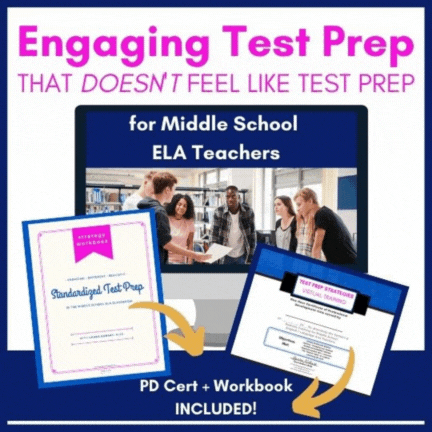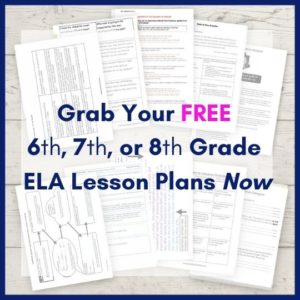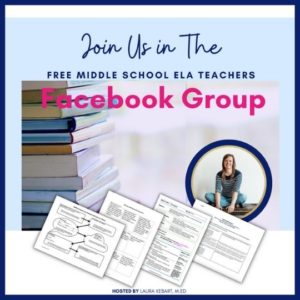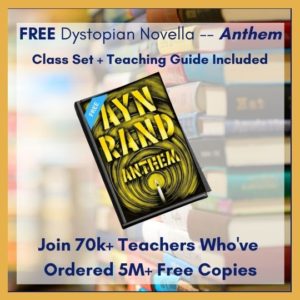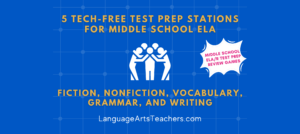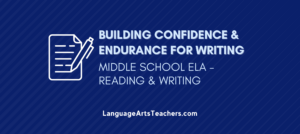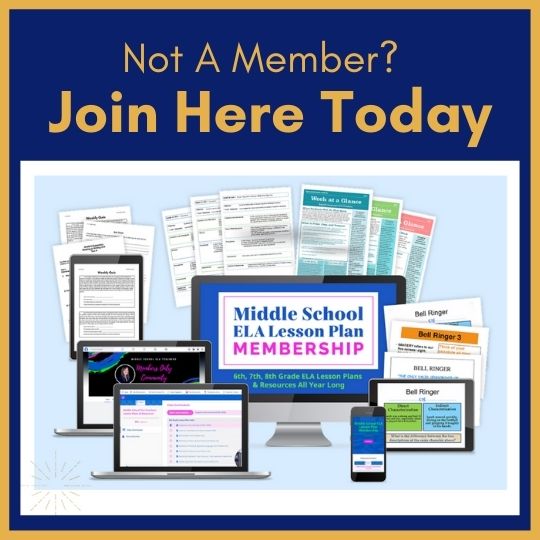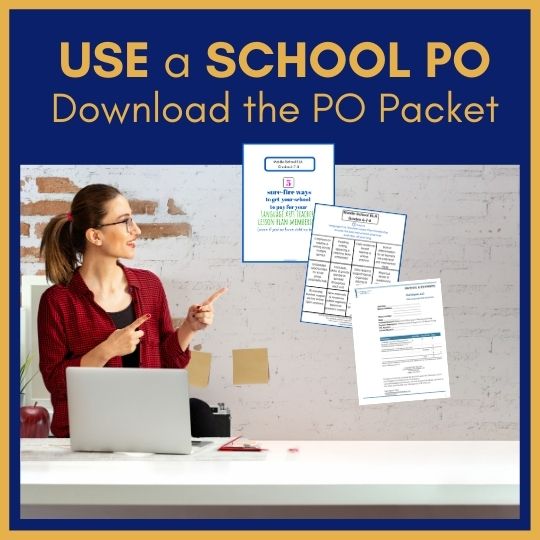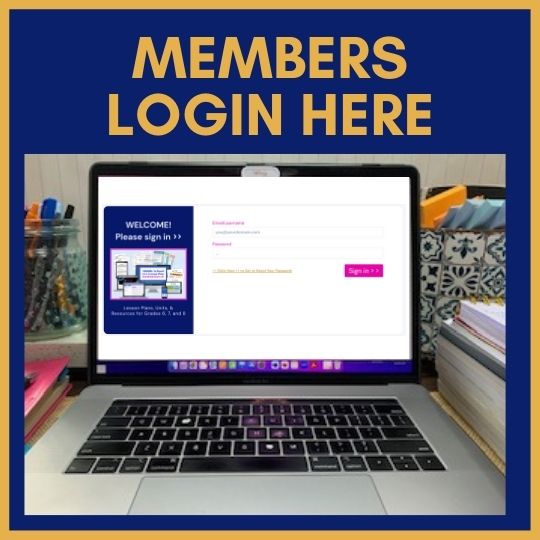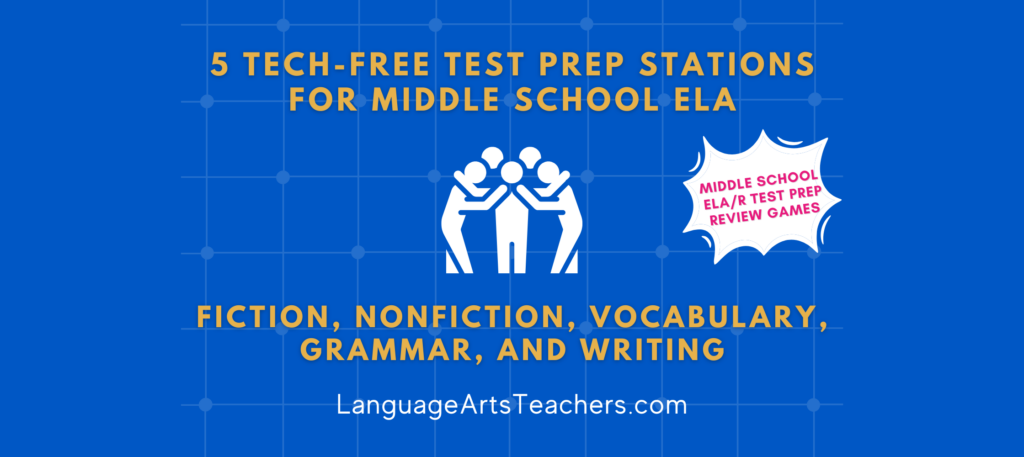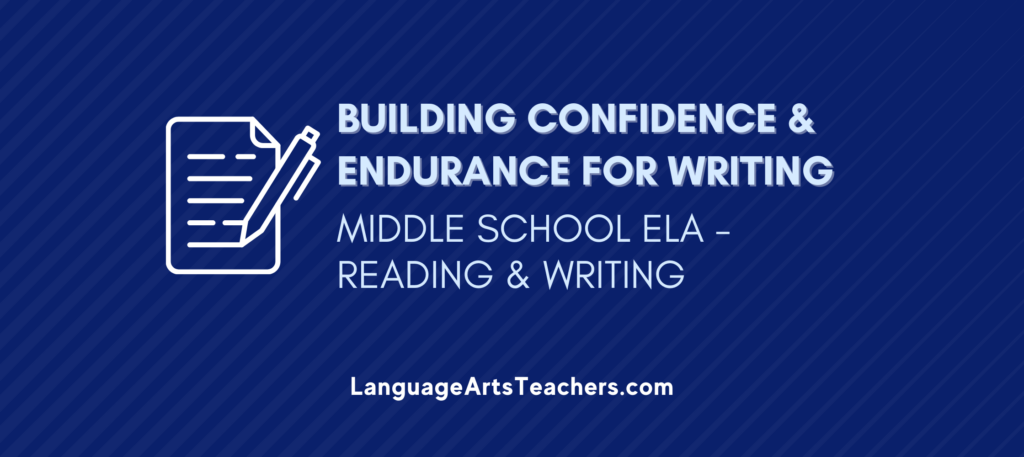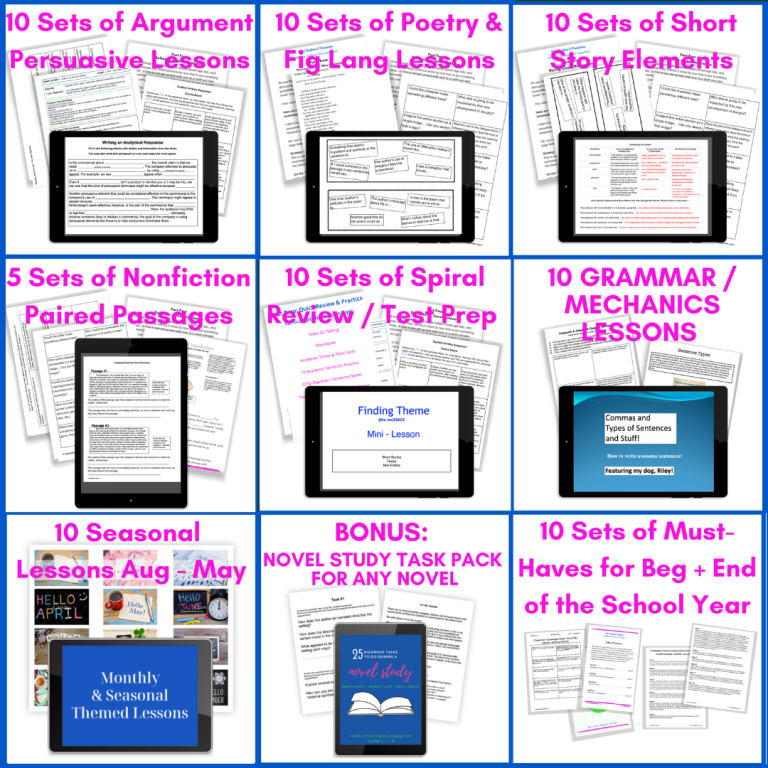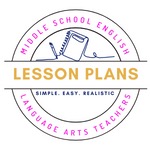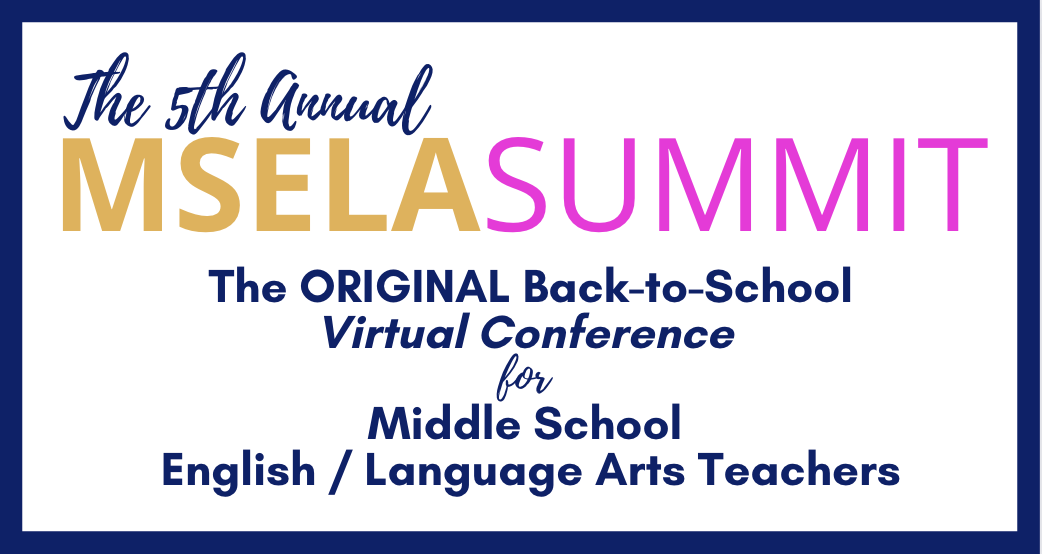Hint: Holistic Grading is the best thing since sliced bread.
The cross that we bear as Language Arts teachers is
all the freakin’ writing we have to grade for our students.
(But, yeah, they NEED to be writing!!)
Let’s give our students lots of writing opportunities without us actually having to grade every word. I’m not saying we will never ever grade any of their writing. That’s part of our job. I’m just going to point out three writing activities kids in a middle school Language Arts class need and can do that we really don’t need to bend over backwards to grade.
So instead of collecting truckloads of papers and reading them this Friday night with your cats curled up at your feet, just roam around the room as they are writing these three assignments (below) and read over their shoulders, giving feedback as you go. Don’t let it be a big deal.
If they’re right on target, assign a 100. If they’re doing about 80% of what they need to be doing, then it’s an 80. Is someone playing around and goofing off and hardly getting anything done while the rest of you are moving forward? Ok, easy to grade.
Anyway, here are three writing activities along with ways to hold the kids accountable so they will actually write and get the practice they really need.
1) Write a Thank You letter.
Yeah, that’s a good one. We at languageartsteachers.com have a full, comprehensive PowerPoint with step-by-step instructions for walking kids through how to write a proper thank-you letter.
It’s just something they need to know how to do. And it’s not super-formal. It’s just a good, practical, non-juvenile way for them to express in writing something that they need to show thanks to someone for.
In fact, it’s so broken-down into paragraph-by-paragraph instructions with arrows and examples that you could probably post it to your own teacher website if you have one and just let them go through it step-by-step.
Or, display the PowerPoint on your big screen and have the class go through it that way.
This would be a great activity for a day that you’re feeling a little under-the-weather yourself.
As long as the students have something to be thankful for, you could bust out this PowerPoint activity and it would take a good 40 minutes or so of class time.
Oh, and they’d definitely be learning something truly useful, too.
Click below to get the free Thank You Letter PowerPoint now.
What Topics Could I Help my Kids Choose for the Thank-You Letter?
* A former favorite teacher or coach
* Someone easily overlooked and under appreciated (lunch lady, anyone?)
* A relative who sent them a present or who did something for them
* A friend who went above and beyond
* It could even be a letter to a business or corporation for a cool product
* Write from the point-of-view of a character from something you’ve read
2) Use Text Evidence to Label a Drawing
Really.
Yeah.
We’re talking about drawing and coloring in middle school Language Arts.
Yup.
Ok, here’s the deal: Have the students completely fill a plain, one-page sheet of white typing paper or manilla paper with colors, images, symbols, scenes, etc. of something they’ve just read in class recently. Think of doing this for a novel, play, short story, or even a narrative poem or a nonfiction article or something like that.
BTW, we have included one of these types of assignments in each Language Arts lesson plan unit available in the members only area of this website. (Coming soon!)
No pressure.
Just sayin’.
Check out this example where the assignment called for the student to think of three things we had read in class before (it could be anything from the entire year!) and the student had to draw/sketch/label/summarize how the three items were thematically linked.
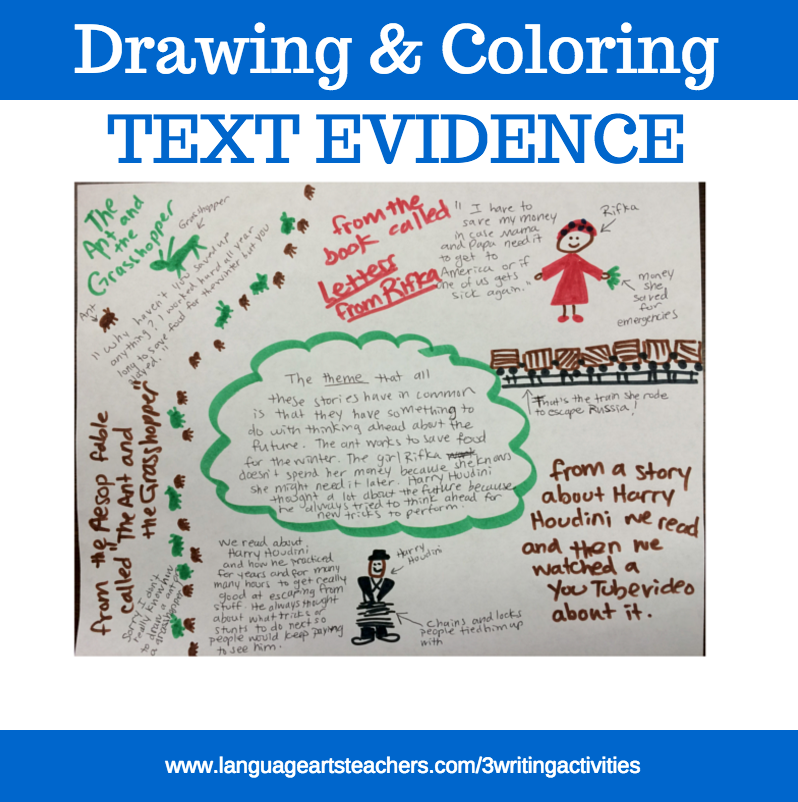 That’s hard!
That’s hard!
Really challenging! But it was still drawing and coloring. Hmm…
It’s actually a really awesome activity for you to assign on a day that you don’t feel too great because it’ll definitely keep the kids busy the whole class.
My experience is that they still need more time to finish the next day because it’s a bit of a time-consuming project.
And on that note, it works great for an alternative assessment!
Basically, it’s like this: The students have to fill an entire page of paper (one side only) with a drawing of something you’ve read or studied recently. For everything they choose to draw, they have to copy a line or a phrase directly from the text as a way of “labeling” each little image on the paper.
Consider how many times the kids will have to go back into the text to look for just the right line, or to re-read something, or to check to see how something is described. That’s exactly the kind of close-reading and careful analysis we want them to do!
They have to put quotation marks around the words and phrases they copy since, well, they copied it… And they have to write a brief paragraph in the middle of the paper explaining why they chose that particular image, or series of images, or whatever to draw.
So the paragraph acts like their commentary for all the images and quotes they filled their paper with.
How to grade this type of writing?
Super easy.
Really.
Just provide the kids with a rubric of the most important parts that you really will be looking for and have a friend check off the items that are there. The student can then make any adjustments or additions needed and they can assign their own grade. Honestly, a lot times, they grade themselves harder than I would. But it gives accountability and it’s really easy for you to look at and put in the grade book.
3) They’ve GOT to be writing with their academic vocabulary terms.
Uh… Isn’t this the same as their normal vocabulary terms?
Like where I have them practice their vocabulary in a sentence and stuff like that?
Um, no.
I mean, yes, that’s really important, but I’m talking about something different here.
What I’m saying is that kids need to be writing their answers to things USING the type of vocabulary that seems to be tripping them up on those lovely state and district (standardized tests) assessments.
Words like convey, illustrate, portray, and the like.
Am I the only one with students who whisper I don’t get this question during a quiz or an independent practice or whatever and then once we just rephrase the question, they’re like Oh, that’s easy. I got it now. I just didn’t know what it was asking.
And it’s because even though we’ve been using convey or illustrates in practice questions and discussions in class, it’s not enough.
We need to have our kiddos writing responses with these words all the time. We need to ensure that they understand this type of academic language. If they’re also having to write with it consistently, it’s gonna stick so much better.
At some point.
It will.
I just know it.
Click here for my list of
15 Academic Terms for Kids to Use Every Day handout
to help you put these words into action on a regular basis.
CLICK HERE FOR THE FREE LESSON & ACTIVITY
Need help with HOW to work this into your already-crushed-for-time classroom?
Leave me a comment below and help me work this up into a mini-lesson or PowerPoint or something that you can use in your classroom.
I need something like this, too, so let’s share ideas about what it should look like and I’ll start making it for myself as well as for you guys to use, too.



